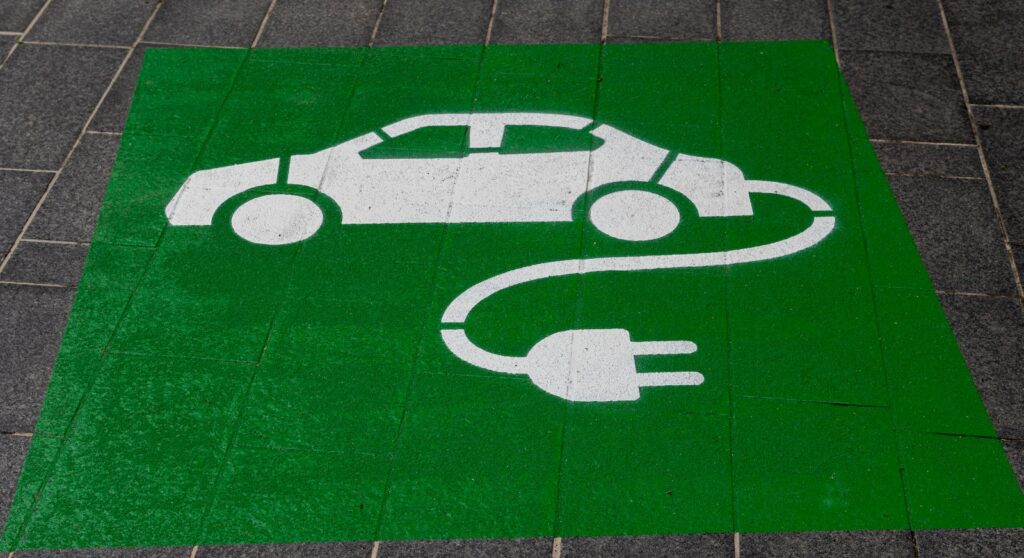Have you heard the expression “think globally, act locally”? This timeless quote extends beyond your personal actions—it encompasses your responsibility to the world. Eco-friendly commuting isn’t just a passing trend; it’s a way of life.
I’ll uncover six strategies for eco-friendly commuting and green travel. Discover how to revolutionize your daily commute, harness its hidden potential, and promote a healthier lifestyle. Get ready to reshape your commute into a powerful tool for personal growth, environmental stewardship, and productivity.
Table of Contents
1. Walking or Biking
Start your eco-friendly commuting journey by embracing the benefits of walking or biking. Active transportation not only contributes to a better environment but also offers numerous of advantages for your overall well-being. Walking or biking allows you to incorporate physical activity into your daily routine, promoting better fitness and improved mental health. By reducing your reliance on motorized transportation, you also help decrease carbon emissions and alleviate traffic congestion.
To implement walking or biking as your mode of transportation, it’s essential to make informed choices and ensure your safety. Invest in a sturdy bicycle that suits your needs and preferences, considering factors like comfort, durability, and functionality. Equip yourself with appropriate safety gear such as helmets, reflective clothing, and lights to enhance visibility.

Mapping out safe and efficient routes is crucial for a pleasant commuting experience. Utilize online resources, smartphone applications, or consult local biking or pedestrian associations to identify bike-friendly paths and walking trails. Consider factors like road conditions, traffic patterns, and accessibility to select the most suitable routes for your daily commute.
Incorporating walking or biking into your routine may require some adjustments, but believe me the long-term benefits are worth it. Begin by replacing short car trips with walking or biking whenever possible. Plan your schedule accordingly to allow for additional travel time and ensure a stress-free experience. Gradually increase the distance you cover and challenge yourself to explore new routes, neighborhoods, and scenic areas. This will allow you to enjoy physical activity and promote mental health. If you are not sure how you should begin using your bike to commute, read this topic: 10 Expert Bike Commuting Tips for Beginners: Unlock Safety and Efficiency on Two Wheels
2. Using Public Transportation
Public transportation offer an efficient and eco-friendly alternative for your daily commute. By opting for buses, trains, trams, or subways, you can significantly reduce your carbon footprint while enjoying other advantages. Public transportation helps alleviate traffic congestion, decrease air pollution, and conserve energy by transporting a larger number of people in a single journey.
To make the most of public transportation, familiarize yourself with the available options in your area. Research bus or train schedules, routes, and fares to optimize your travel time and plan your daily commute effectively. Many cities provide online resources or mobile apps that offer real-time information on public transportation, making it easier to navigate and stay updated on any schedule changes or disruptions. Often, Google Maps also displays this features, depending on where you are located.

While commuting on public transportation, take the opportunity to engage in productive activities. Utilize the time to catch up on reading, listen to educational podcasts or audiobooks, or plan your day ahead. If you want to make the most out of your time while commuting, check our post “Commute Optimization Mastery: 8 Key Tactics to Maximize Your Journey as a Busy Professional” Consider carrying a lightweight bag or backpack to store your essentials and make your travel experience more comfortable.
Take advantage of the amenities provided by public transportation services. Some trains or buses offer Wi-Fi connectivity, allowing you to respond to emails, catch up on work tasks, or stay connected with friends and family. Others may provide designated bike racks or storage spaces for a seamless transition between public transportation and active transportation modes like walking or biking.
By embracing public transportation as a sustainable commuting option, you not only reduce your environmental impact but also contribute to the efficiency and well-being of your community. Prioritize public transportation whenever feasible, and encourage others to join the movement for greener and more accessible transportation systems.
3. Carpooling
Carpooling presents an excellent opportunity to make your daily commute more eco-friendly and enjoyable. By sharing rides with colleagues, friends, or family members who have similar travel routes, you not only reduce the number of vehicles on the road contributing to decreased carbon emissions, but also enhance social interactions.
To make carpooling a seamless and efficient experience, establish clear communication and coordination with your fellow carpoolers. Set up a schedule that accommodates everyone’s needs and preferences, ensuring a smooth and punctual commute. Consider utilizing mobile apps or online platforms specifically designed for carpooling to connect with potential carpool partners in your area.
Pooling resources and sharing the cost of fuel and parking expenses can result in significant savings for all participants. Furthermore, carpooling offers a chance to build connections and foster a sense of community. Use the time spent together during the commute to engage in meaningful conversations, share experiences, or simply enjoy each other’s company.

Carpooling also provides an opportunity for implementing alternate driving arrangements, such as taking turns driving or designating specific days for each carpool member to drive. This approach distributes the driving responsibilities, reduces wear and tear on individual vehicles, and promotes a fair and equitable arrangement among participants.
Another benefit of carpooling is access to high-occupancy vehicle (HOV) lanes. These lanes are available in some cities in US and Canada and can significantly reduce travel time by bypassing traffic congestion. Familiarize yourself with local HOV lane regulations and take advantage of these dedicated lanes whenever available.
Make carpooling a regular part of your commuting routine, and together, we can create a more sustainable and connected world.
4. Carbon Offset Credits
As responsible commuters, it is essential to understand the concept of carbon offset credits and how they contribute to eco-friendly commuting and green travel. Carbon offsetting allows individuals to take responsibility for their carbon emissions by supporting projects that reduce greenhouse gas emissions elsewhere, balancing their own carbon footprint.
To make informed decisions about carbon offset credits, start by calculating your carbon footprint. Various online calculators are available that consider factors such as your mode of transportation, distance traveled, and fuel consumption to estimate your emissions. Once you have an understanding of your carbon footprint, you can explore different carbon offset projects and initiatives.
Choose reputable carbon offset projects that align with your values and prioritize projects that focus on renewable energy, reforestation, or sustainable agriculture. Verify the credibility and transparency of the projects, ensuring that they follow internationally recognized standards and protocols.
Supporting carbon offset projects involves purchasing carbon offset credits equivalent to your calculated emissions. The financial support provided through carbon offset credits helps these projects thrive and have a positive environmental impact.
By engaging in carbon offsetting, you reduce your carbon footprint and contribute to the development of sustainable initiatives worldwide. Carbon offsetting serves as an effective tool make your commuting activities more eco-friendly. Embrace this practice to demonstrate your commitment to a more sustainable future and inspire others to do the same. If you want to learn more about sustainable travel solutions, read this: Eco-Warrior Commuter: 6 Brilliant Sustainable Travel Solutions
5. Consolidating Errands
One of the most effective strategies for eco-friendly commuting is to consolidate errands and minimize the number of trips you need to take. By optimizing your errand-running process, you not only save time but also reduce fuel consumption, vehicle emissions, and overall environmental impact.
To begin consolidating errands, create a comprehensive list of the tasks you need to accomplish within a specific timeframe. Categorize your errands based on their location or priority and identify opportunities to combine multiple tasks into a single trip. By grouping errands that are in close proximity to one another, you can significantly reduce the distance traveled and make your commuting more efficient.
Utilize technology and online resources to plan your errands effectively. Mapping applications and GPS systems can help you identify the most efficient routes and guide you through the most optimized sequence of stops. These tools can also provide real-time traffic updates, helping you avoid congested areas and further streamline your errand-running process.

Consider alternative transportation options for certain errands, such as walking, biking, or using public transportation. Assess the feasibility of leaving your vehicle behind for shorter trips or when running errands in areas with good pedestrian infrastructure or reliable public transit systems. This approach not only reduces vehicle emissions but also incorporates active transportation into your daily routine.
Timing is crucial when it comes to consolidating errands. Aim to plan your trips during off-peak hours to avoid heavy traffic and minimize travel time. By being strategic about the timing of your errands, you can experience a more efficient and stress-free commuting experience.
Consolidating errands not only benefits the environment but also enhances your personal productivity. This way, you create more time for other activities, hobbies, or spending quality time with loved ones.
6. Embracing Sustainable Commuting Habits
In the final section, let’s delve into sustainable commuting habits that extend beyond the daily routine. You can play a significant role in shaping a more sustainable future and fostering positive change within your community, by making these long-term commitments.
Advocacy is a great way to promote sustainable commuting practices. Become an advocate for bike lanes, improved public transportation infrastructure, and sustainable urban planning in your community. Engage with local government representatives, transportation agencies, and community organizations to voice your support for initiatives that prioritize eco-friendly options.
Educate yourself and others about the benefits of sustainable commuting. Share your knowledge and experiences with friends, family, and colleagues, and encourage them to adopt eco-friendly commuting habits. Recycle. Organize workshops, presentations, or community events to raise awareness and inspire others to positively impact the environment through their daily commuting choices.

Consider forming or joining community groups or organizations focused on sustainable transportation. Collaborate with like-minded individuals to organize bike-to-work challenges, carpooling initiatives, or public transportation awareness campaigns. By working together, you can create a stronger collective voice and advocate for change more effectively.
Take advantage of digital platforms and social media to amplify your message. Share tips, success stories, and resources related to eco-friendly commuting on various online platforms. Use hashtags and connect with relevant communities to reach a wider audience.
Adopt a mindset of continuous improvement and innovation. Stay informed about innovations on eco-friendly transportation, such as electric vehicles, bike-sharing programs, or smart transportation systems. Explore how these innovations can be integrated into your daily commute and share your experiences with others.
By committing to sustainable commuting habits and actively advocating for change, you have the potential to create lasting positive impact on the environment, enhance the quality of life in your community, and pave the way for a more sustainable transportation landscape.
FAQ
How can I commute environmentally friendly?
To commute environmentally friendly, you can incorporate several strategies into your daily routine. Consider walking or biking whenever possible, as these active modes of transportation reduce carbon emissions and promote personal well-being. Utilize public transportation systems, such as buses or trains, to decrease traffic congestion and air pollution. Carpooling with colleagues or friends helps reduce the number of vehicles on the road and fosters social connections. You can also offset your carbon footprint by supporting projects that reduce greenhouse gas emissions. Consolidating errands and minimizing trips, as well as advocating for sustainable commuting practices, are additional ways to make a positive impact on the environment during your commute.
What is the most eco-friendly transportation?
Walking or biking are the most eco-friendly forms of transportation as they produce zero carbon emissions, promote physical activity, and contribute to a greener environment. These active modes of transportation have a minimal environmental impact and are beneficial for personal health as well.
What is green commuting?
The green commute meaning encompasses using eco-friendly modes of transportation, such as walking, biking, carpooling, or public transportation, to reduce carbon emissions, minimize environmental impact, promote physical activity, and create a more sustainable transportation system.
What is sustainable commute?
A sustainable commute refers to adopting environmentally friendly transportation practices that prioritize reducing carbon emissions, minimizing environmental impact, and promoting long-term sustainability. It involves utilizing modes like walking, biking, public transportation, or carpooling to create a greener and more efficient commuting experience.








